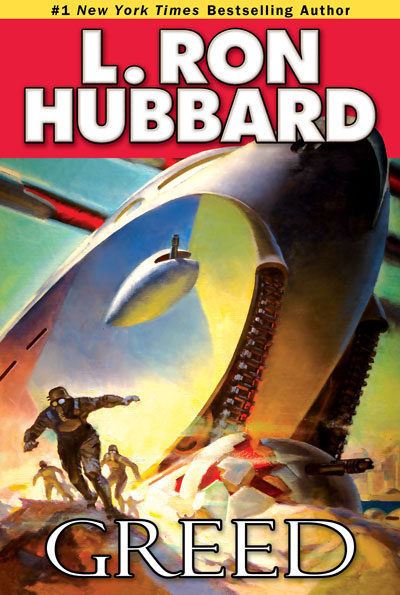Orders Is Orders Glossary
Stories from the Golden Age reflect the words and expressions used in the 1930s and 1940s, adding unique flavor and authenticity to the tales. While a character’s speech may often reflect regional origins, it also can convey attitudes common in the day. So that readers can better grasp such cultural and historical terms, uncommon words or expressions of the era, the following glossary has been provided.
adagio dancers: performers of a slow dance sequence of well-controlled graceful movements including lifting, balancing and turning, performed as a display of skill.
Adonis: an extremely handsome young man; originating from the name of a beautiful youth in Greek mythology.
altimeter: a gauge that measures altitude.
Atlantic Fleet: the part of the Navy responsible for operations in and around the Atlantic Ocean. Originally formed in 1906, it has been an integral part of the defense of the US for most of the twentieth century.
batteries: groups of large-caliber weapons used for combined action.
Big Town: nickname for New York City.
bobtail: to curtail or reduce, as in rank.
boot: a Marine or Navy recruit in basic training.
brigand: one who lives by plunder; a bandit.
Browning, 1917: a light machine gun weighing fifteen pounds. It looks like and can be fired like an ordinary rifle, either from the shoulder or the hip. It was invented by John M. Browning (1855–1926), an American firearms designer.
bug: a high-speed telegrapher’s key that makes repeated dots or dashes automatically and saves motion of the operator’s hand.
bulldog toes: high rounded toes on shoes with thick soles.
carbine: a short rifle used in the cavalry.
casqued: having a military headpiece or helmet on.
cat’s: cat’s pajamas; cat’s meow; someone or something wonderful or remarkable.
Château-Thierry: a town of northern France on the Marne River, east-northeast of Paris. It was the site of the second Battle of the Marne (June 3–4, 1918), which ended the last major German offensive in World War I.
Chi: Chicago.
cholera: an infectious disease of the small intestine, typically contracted from infected water.
C-in-C: Commander in Chief.
Clydes: Clydesdale; one of a Scottish breed of strong, hardy draft horses, having a feathering of long hairs along the backs of the legs, so called because they were bred in the valley of the Clyde in Scotland.
cork off: go to bed; sleep.
corn willy: canned corned beef hash.
cowl: a removable metal covering for an engine, especially an aircraft engine.
dixie: a mess tin or oval pot often used in camp for cooking or boiling (as tea).
Doko e yuku!: (Japanese) Where are you going!
embrasures: (in fortification) openings, as a loophole through which missiles may be discharged.
emplacements: prepared positions for weapons or military equipment.
fan dancer: a woman dancer who performs solo, nude or nearly nude, using fans for covering.
Frisco: San Francisco.
gangway: a narrow, movable platform or ramp forming a bridge by which to board or leave a ship.
Genghis Khan: (1162?–1227) Mongol conqueror who founded the largest land empire in history and whose armies, known for their use of terror, conquered many territories and slaughtered the populations of entire cities.
G-men: government men; agents of the Federal Bureau of Investigation.
golden guinea: a British coin worth twenty-one shillings (a shilling is one-twentieth of a pound).
gunwale: the upper edge of the side of a boat. Originally a gunwale was a platform where guns were mounted, and was designed to accommodate the additional stresses imposed by the artillery being used.
Hell to Halifax: a variation of the phrase “from here to Halifax,” meaning everywhere, in all places no matter how far from here. “Halifax” is a county in eastern Canada, on the Atlantic Ocean.
howitzers: cannons that have comparatively short barrels, used especially for firing shells at a high angle of elevation for a short range, as for reaching a target behind cover or in a trench.
Huangpu: a long river in China flowing through Shanghai. It is a major navigational route, lined with wharves, warehouses and industrial plants, and provides access to Shanghai for oceangoing vessels.
ideographs: written symbols that represent an idea or object directly, rather than by particular words or speech sounds, as Chinese or Japanese characters.
jack: money.
Kawasaki KDA-5: a fighter biplane built by Kawasaki, a Japanese aircraft manufacturer founded in 1918. The first prototype flew in 1932; 380 of these planes were built.
key: a hand-operated device used to transmit Morse code messages.
leatherneck: a member of the US Marine Corps. The phrase comes from the early days of the Marine Corps when enlisted men were given strips of leather to wear around their necks. The popular concept was that the leather protected the neck from a saber slash, though it was actually used to keep the Marines from slouching in uniform by forcing them to keep their heads up.
Legation: the official headquarters of a diplomatic minister.
lighters: large open flat-bottomed barges, used in loading and unloading ships offshore or in transporting goods for short distances in shallow waters.
mean: unimposing or shabby.
men-o’-war: armed ships of a national navy usually carrying between twenty and one hundred and twenty guns.
Mex: Mexican peso; in 1732 it was introduced as a trade coin with China and was so popular that China became one of its principal consumers. Mexico minted and exported pesos to China until 1949. It was issued as both coins and paper money.
Mikado: the emperor of Japan; a title no longer used.
Mon o akero!: (Japanese) Open the gate!
Native Quarter: also Native City; deep in the center of Peking, far from the ordinary people, was the Forbidden City, where the Emperor resided and carried out the affairs of state. It was spread out over a large area with audience halls, libraries and theaters, all reserved solely for the emperor. Surrounding this area was the Imperial City, with granaries, temples, residences for high officials and workshops of artisans who provided services and goods for the imperial household. Circling that was the Tartar City, occupied by the military men; and to the south was the Native City, where the Chinese resided. Each of these cities within cities had its own walls, which were clearly organized and defined the status of its residents.
Nic: Nicaragua; from 1927 until 1933 there was guerrilla warfare against the Nicaraguan government and the US Marines that were sent to defend US interests.
Nippon: the native Japanese name for Japan.
OD: (military) olive drab.
Old Glory: a common nickname for the flag of the US, bestowed by William Driver (1803–1886), an early nineteenth-century American sea captain. Given the flag as a gift, he hung it from his ship’s mast and hailed it as “Old Glory” when he left harbor for a trip around the world (1831– 1832) as commander of a whaling vessel. Old Glory served as the ship’s official flag throughout the voyage.
PC: Post Command; military installation where the command personnel are located.
Peking: now Beijing, China.
pince-nez: a pair of glasses held on the face by a spring that grips the nose.
Portsmouth: US Naval and Marine prison located in Maine and occupied from 1908 until 1974.
powder, took a: made a speedy departure; ran away.
radio: a radio message; a radiogram.
redeye: cheap, strong whiskey.
Rising Sun: Japan; the characters that make up Japan’s name mean “the sun’s origin,” which is why Japan is sometimes identified as the “Land of the Rising Sun.” It is also the military flag of Japan and was used as the ensign of the Imperial Japanese Navy and the war flag of the Imperial Japanese Army until the end of World War II.
Scheherazade: the female narrator of The Arabian Nights, who during one thousand and one adventurous nights saved her life by entertaining her husband, the king, with stories.
scuppered: ruined; wrecked.
scuppers are under: when a ship is too heavily loaded that its scuppers (openings in the side of a ship at deck level that allow water to run off) are under water. Used figuratively.
sea anchor: a device, such as a conical canvas bag, that is thrown overboard and dragged behind a ship to control its speed or heading.
Shanghai: city of eastern China at the mouth of the Yangtze River, and the largest city in the country. Shanghai was opened to foreign trade by treaty in 1842 and quickly prospered. France, Great Britain and the United States all held large concessions (rights to use land granted by a government) in the city until the early twentieth century.
Shantung: the dialect spoken in Shantung, a peninsula in east China extending into the Yellow Sea.
Shen Province: also known as Shensi or Shaanxi; north central province neighboring Shan Province.
shin the chains: leave the ship without permission.
sideslip: (of an aircraft when excessively banked) to slide sideways, toward the center of the curve described in turning.
slip cable: to leave a place; part company. From the nautical phrase “to slip cable” which means to let go of the anchor cable (let it slip off the ship) when a quick departure is needed and time cannot be spared to raise the anchor.
stanchion: an upright bar, post or frame forming a support or barrier.
swagger coat: a woman’s pyramid-shaped coat with a full flared back and usually raglan sleeves (sleeves extending to the collar of a garment instead of ending at the shoulder), first popularized in the 1930s.
taii: (Japanese) a lieutenant.
tanglefoot: a strong drink, especially cheap whisky.
three sheets to the wind: in a disordered state caused by drinking; intoxicated. This expression is generally thought to refer to the sheet (a rope or chain) that holds one or both lower corners of a sail. If the sheet is allowed to go slack in the wind, the sail flaps about and the boat is tossed about much as a drunk staggers. Having three sheets loose would presumably make the situation all the worse.
Tientsin: seaport located southeast of Peking; China’s third largest city and major transportation and trading center. Tientsin was a “Treaty Port,” a generic term used to denote Chinese cities open to foreign residence and trade, usually the result of a treaty.
tin can: an improvised hand grenade, made by filling tin cans with bits of iron and a high explosive in which a fuse cord was inserted. The cord was lighted and the can with the sputtering fuse was thrown into the enemy lines.
toesmithing: among people of the theater, a term for dancing.
tonneau: the rear seating compartment of an automobile.
trick: a period or turn of duty.
under weigh: in motion; underway.
USMC: United States Marine Corps.
USN: United States Navy.
USS: United States Ship.
“white man’s burden”: from a poem written by Rudyard Kipling originally published in 1899 with regard to the US conquest of the Philippines and other former Spanish colonies. Subject to different interpretations, it was latched onto by imperialists to justify colonialism as a noble enterprise. Much of Kipling’s other writings suggested that he genuinely believed in the benevolent role that the introduction of Western ideas could play in lifting non-Western peoples out of “poverty and ignorance.”
White Russian: a Russian who fought against the Bolsheviks (Russian Communist Party) in the Russian Revolution, and fought against the Red Army during the Russian Civil War from 1918 to 1921.
whitewash: a white liquid that is a mixture of lime or powdered chalk and water, used for making walls or ceilings white.












